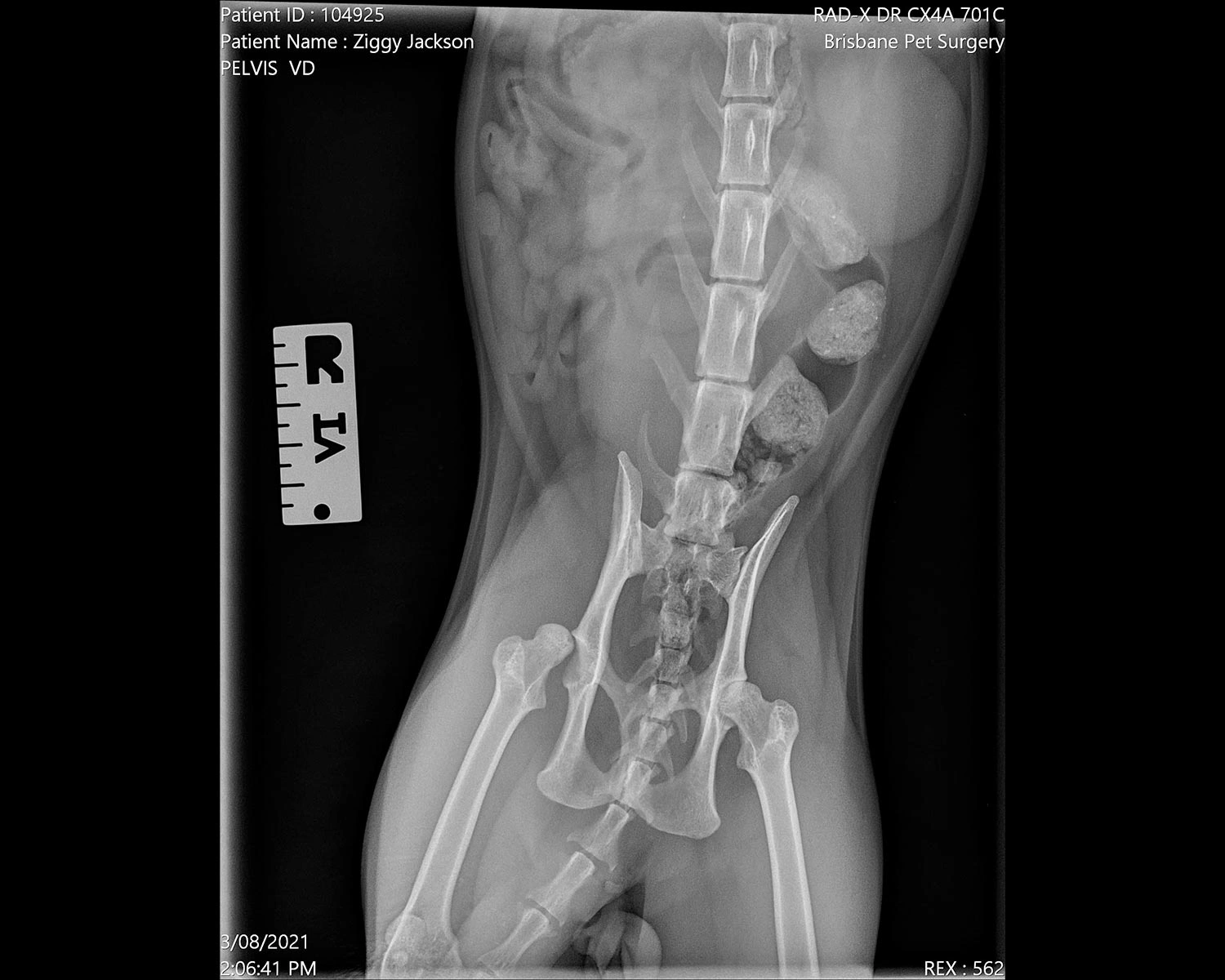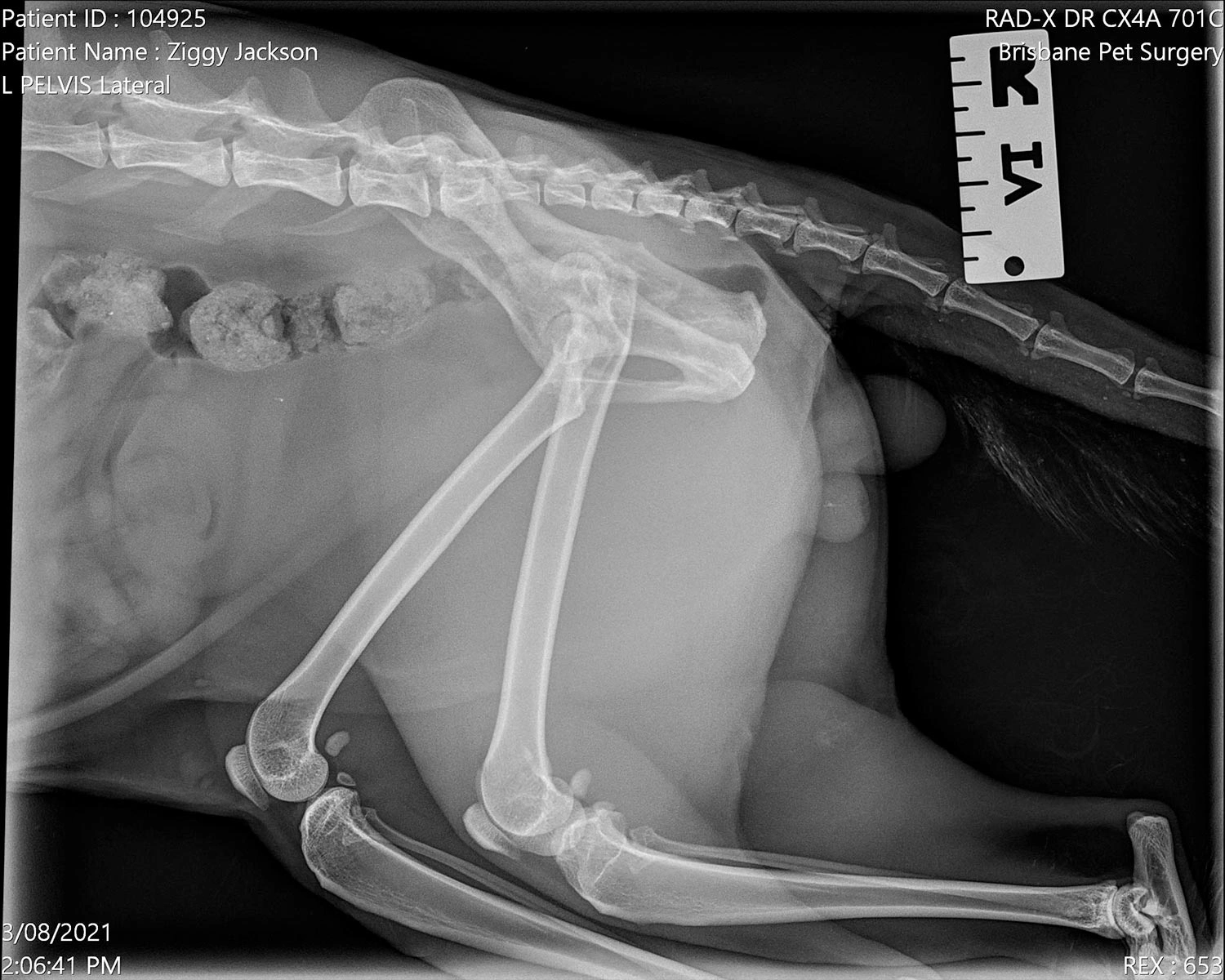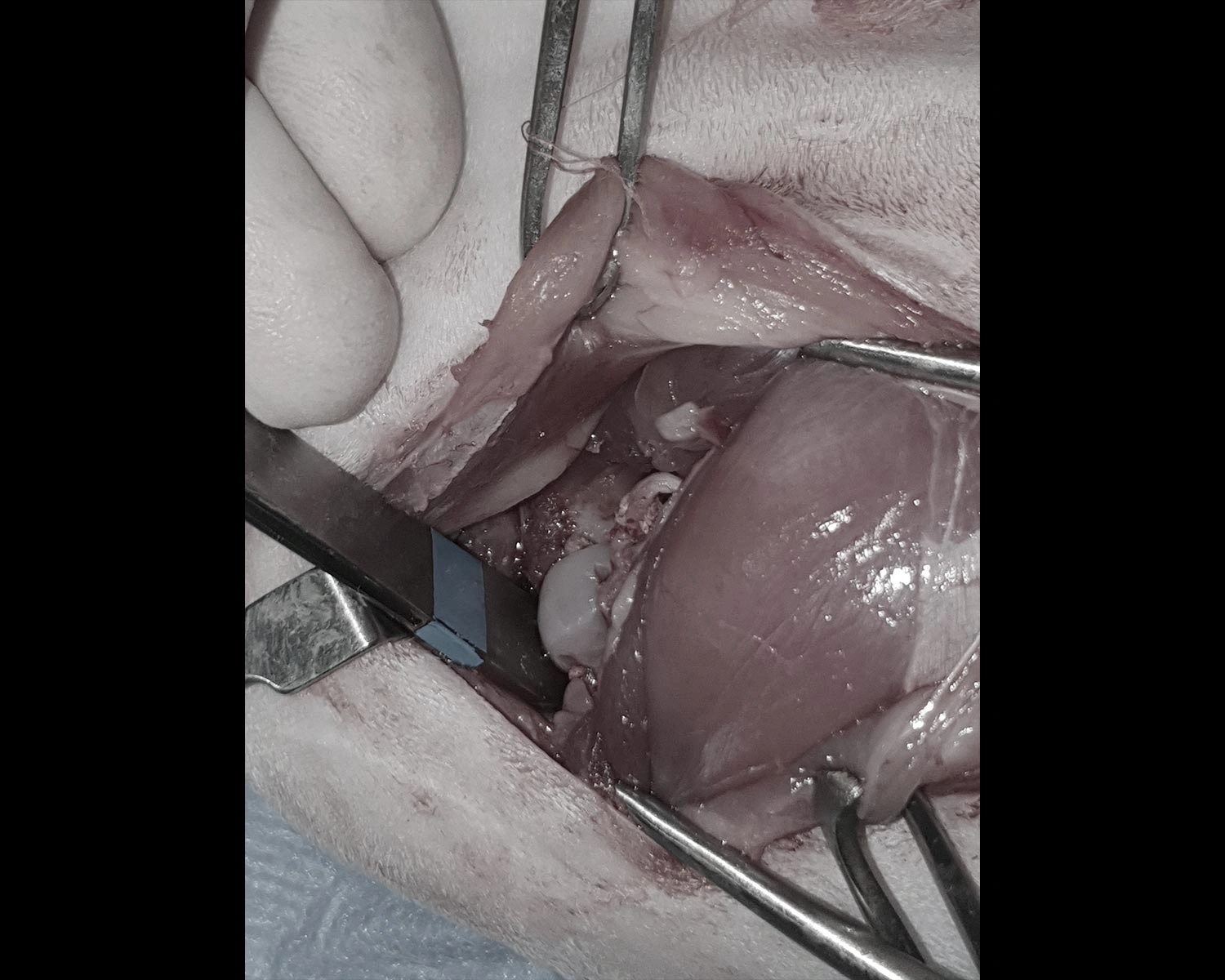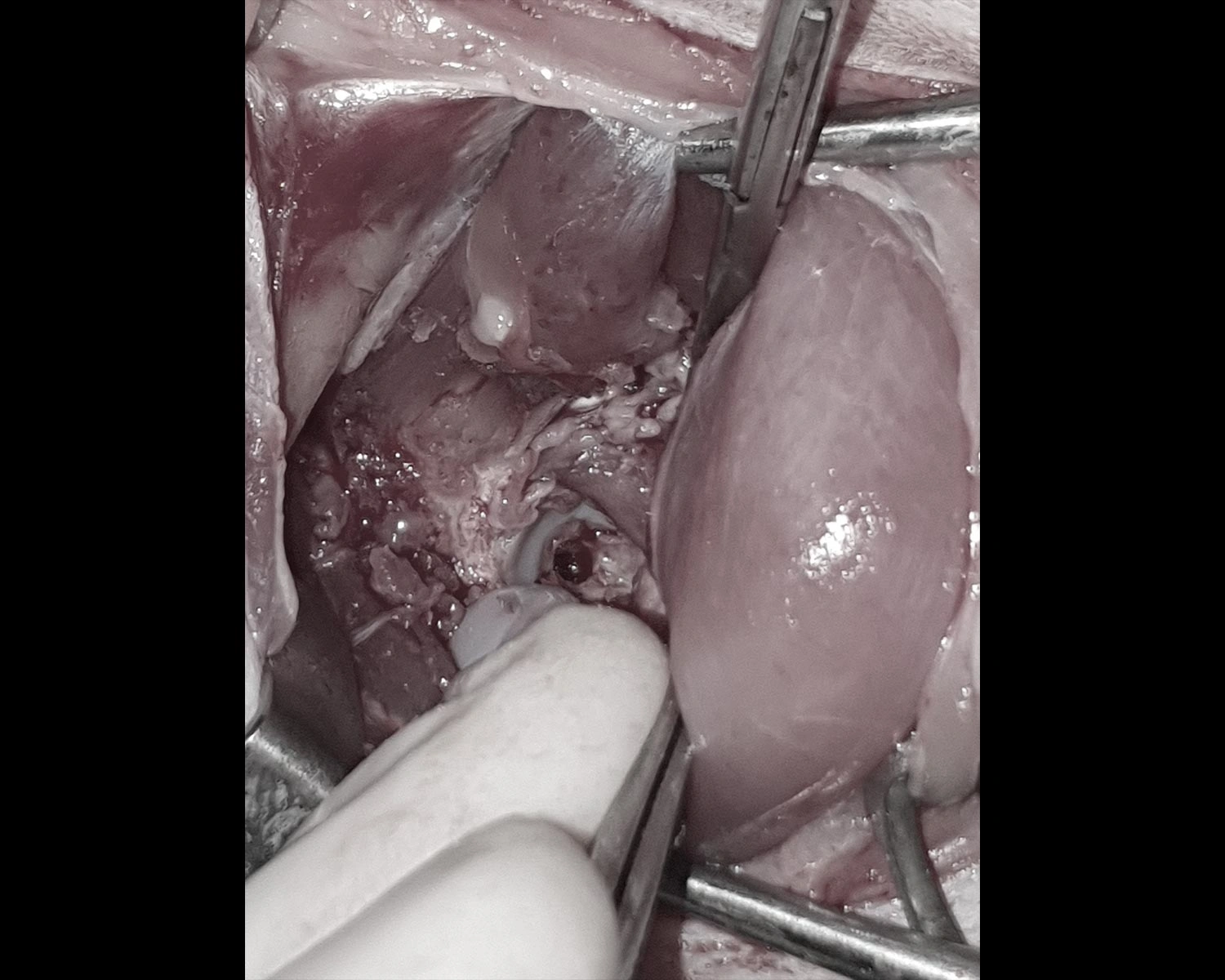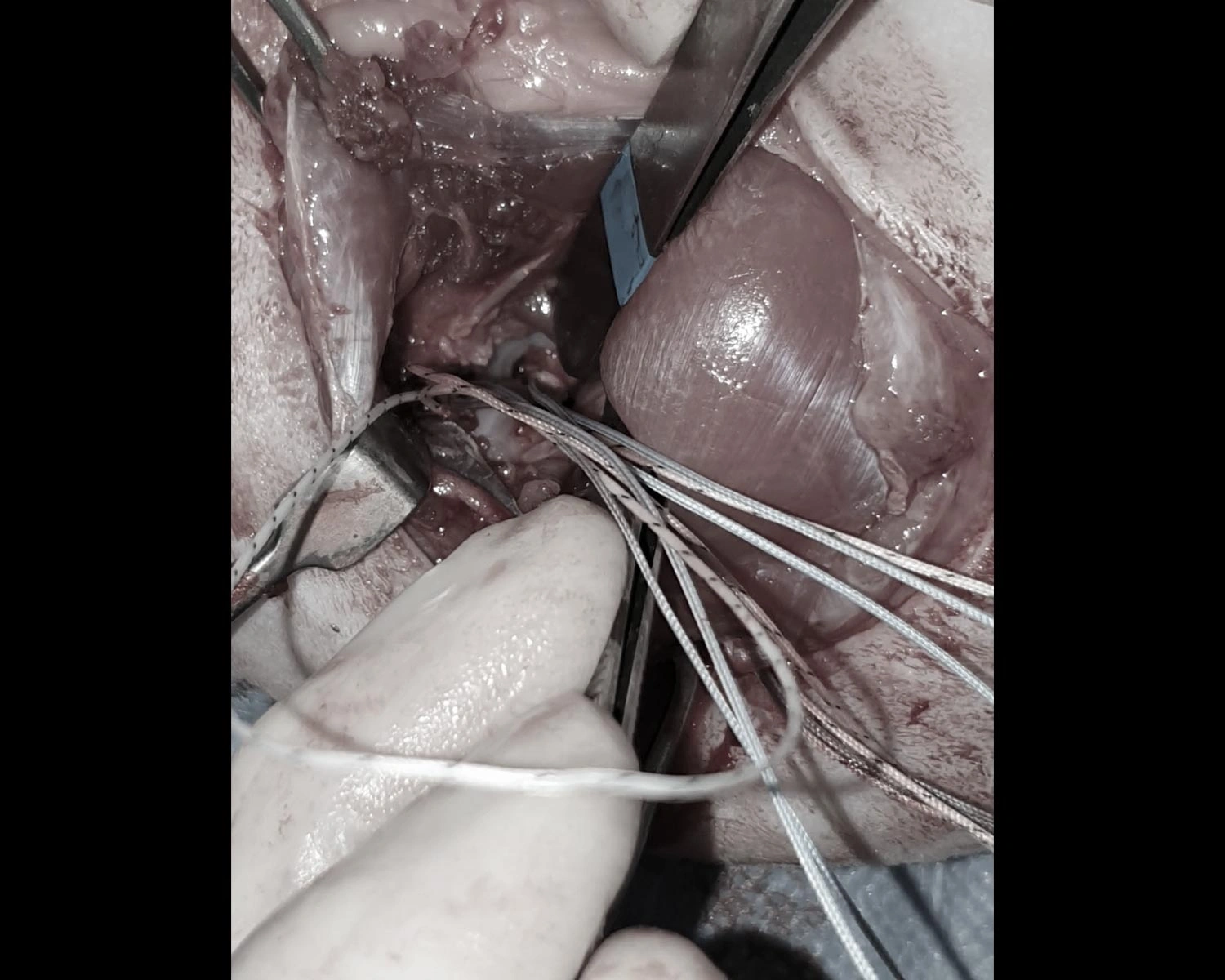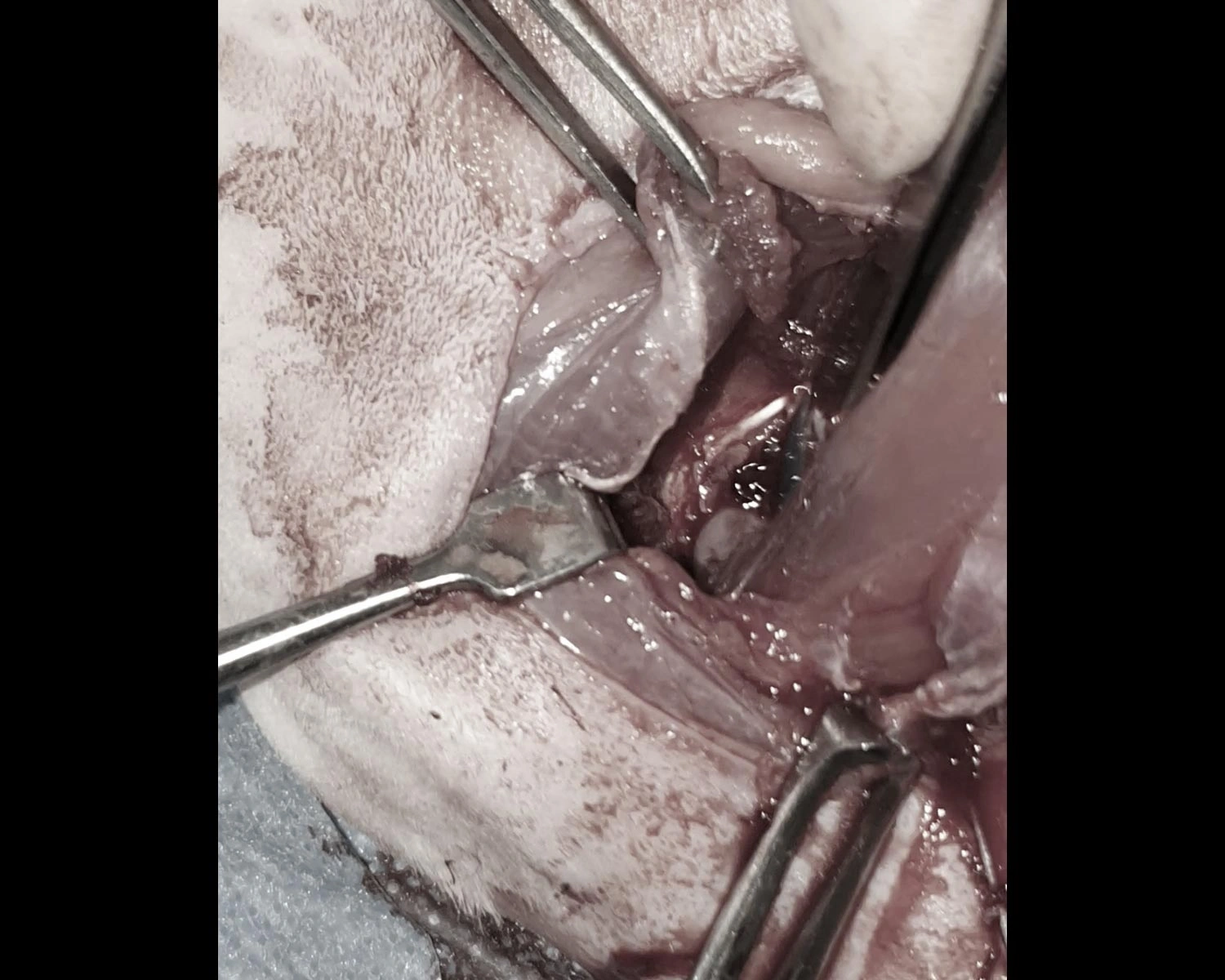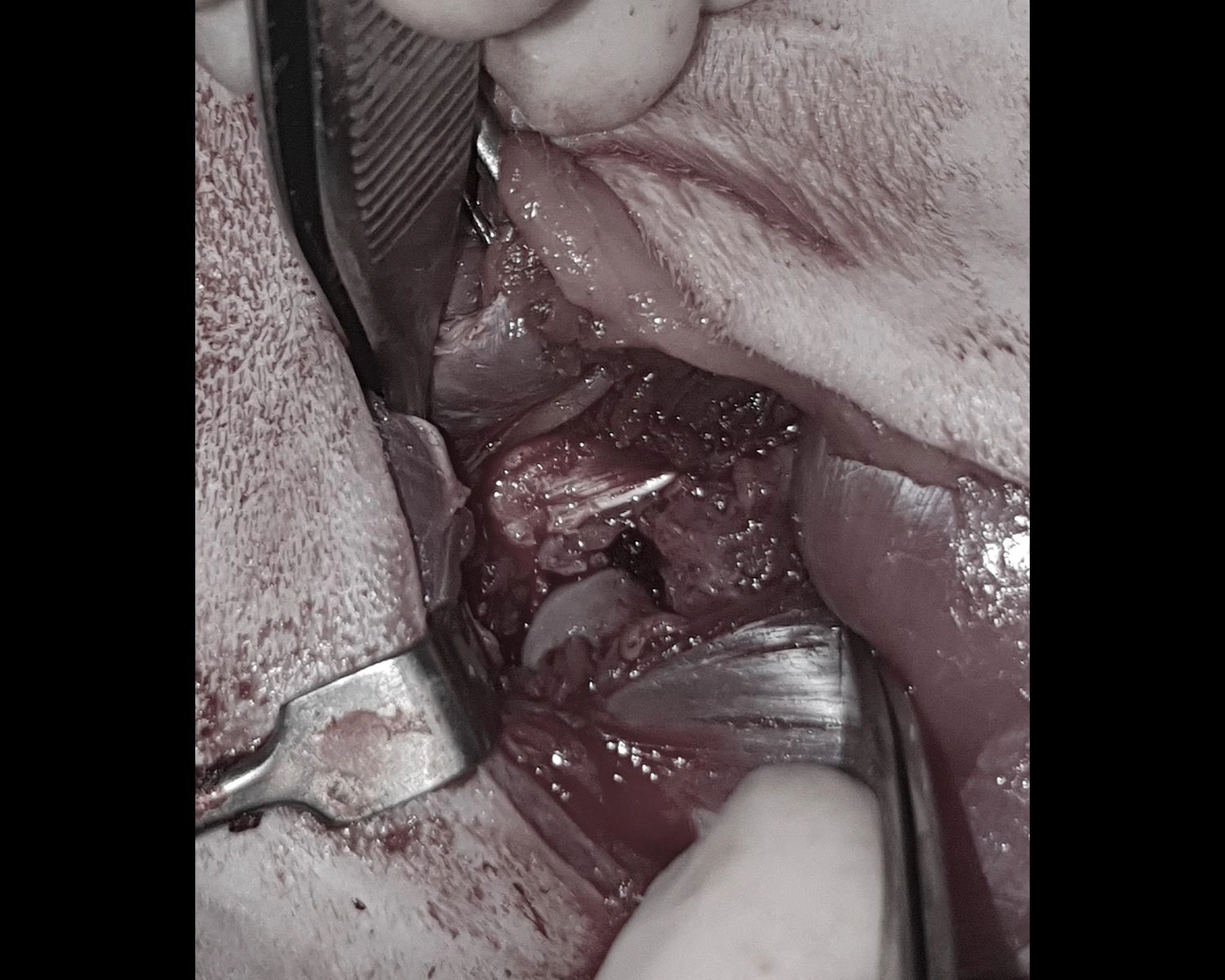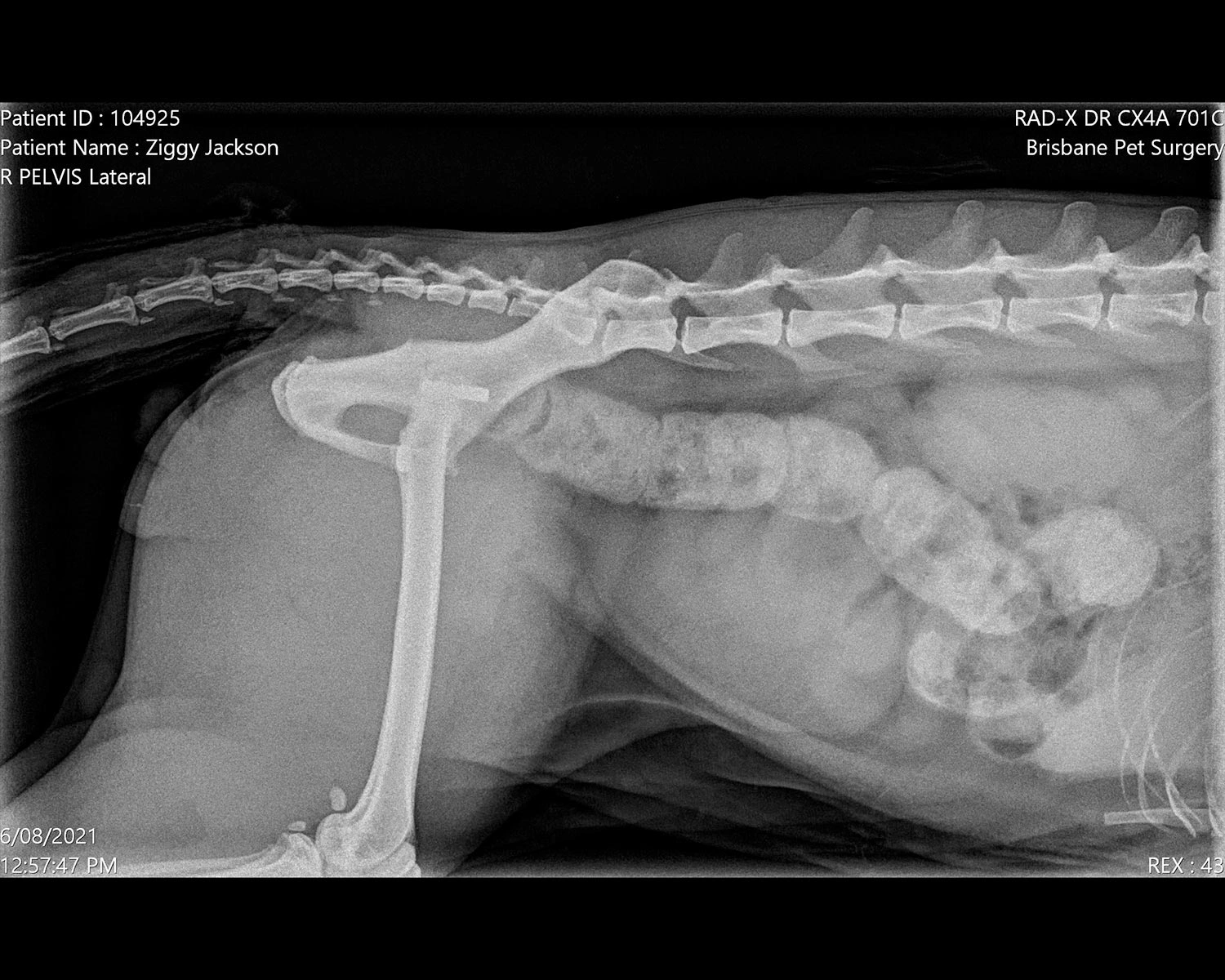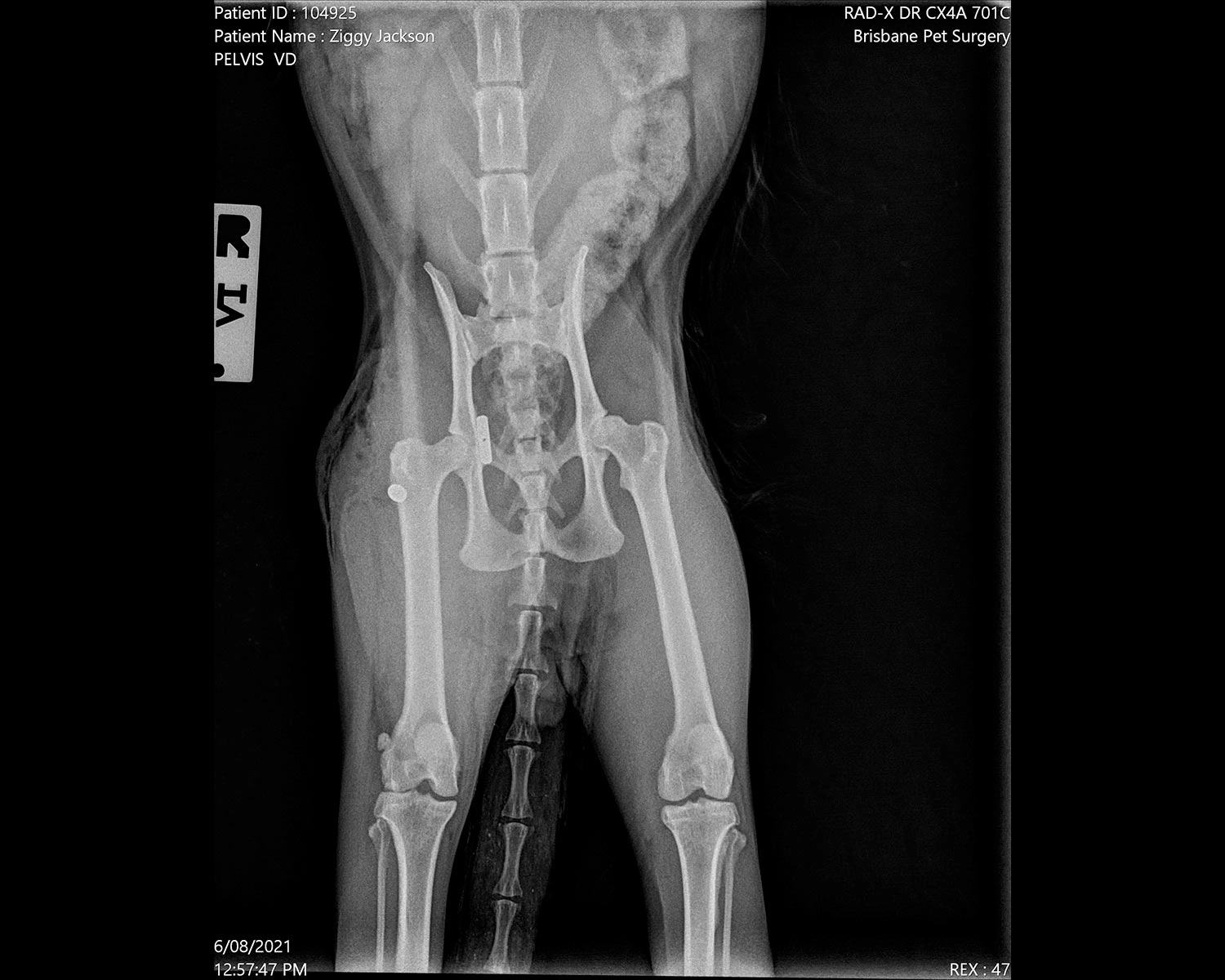Ziggy - 4 year old Rag Doll cat with right hind dislocated hip surgery
Ziggy is a 4 year old rag doll who presented to the clinic with hind leg lameness. X-rays revealed that he had dislocated his right hip.
How are dislocations treated?
Dislocations can be treated by removing the head and neck of the femur so that it is no longer connected to the pelvis. This stops bone contact between the femur and the pelvis with the muscles still providing sufficient support. Note, however, that this is a salvage procedure – fixing the dislocation is always a better option. This is because removal of the femoral head and neck (FHNE) doesn’t always have a pain free outcome and, even if it does work, the recovery tends to be months rather than weeks.
Dislocations can be fixed using a toggle and thread system, which involves a toggle being placed on the inside of the pelvis through the acetabulum and the femoral head being held in place by a thread placed through the head and neck and tied on the outside of the femur. This method usually works fairly well, especially when a woven, non-stretching and extremely strong material (such as Athrex Fibre Wire) has been used.
How are dislocations diagnosed, treated and cared for after surgery?
Ziggy was admitted for stabilisation for his right femoral head dislocation. He was placed onto IV fluids via a catheter, induced with O2/ISO gas by mask and intubated.
The skin over the affected hip area was incised, the superficial gluteal was removed from the greater trochanter and the dislocated femoral head was located. Once the acetabulum was located and cleaned, a 3.2mm drill hole was placed through the acetabulum at the insertion point of the round ligament. Once the hole was widened, Arthrex Mini Fibre Wire was placed through the toggle, through the proximal femur and through the acetabulum. The femoral head was then replaced into the acetabulum, the fibre wire was pulled tight and secured using a 4-hole button.
The joint capsule and muscles were sutured using absorbable stitches, then the skin was closed using absorbable ford interlocking.
Later x-rays of Ziggy’s pelvis revealed that the surgery had been successful. He was cage rested for 6 weeks followed by 6 weeks of being kept inside before he was allowed to resume life as an outdoor cat.
How much does the treatment cost?
The toggle and thread system currently costs between $2,000 and $2,700. This is less than what a referral centre would charge for the FHNE removal and much less than what they would charge for hip dislocation stabilisation via toggle pin. Ziggy’s surgery cost $2,060 (including desexing).
Procedure photos for recent case
Warning: graphic images
